The Dzukou Valley Trek and knowing the best time to visit this stunning location make it a must for any adventure seeker. Dzukou Valley lies on the border of Nagaland and Manipur in northeast India. The ultimate hidden paradise for nature goers and adventure enthusiasts. It is incredible with the entire trek surrounded by beautiful landscapes forcing you to set your camps in no ordinary places. A large bowl on an altitude of 2,452 meters above sea level and spanning a total area of about 27Squre kilometers.
It is part peaceful and serene beauty, with fun filled action packed adventure. Better time to visit is through April to August for Flowers and from October to March for Cool Weather. This Travel Guide to Dzukou Valley will deliver you all the tips for getting to and back from there, fuss-free.

Table of Contents
Key Takeaways
- Dzukou Valley is an almost 27 sq. km at an altitude of 2,452 m.
- Between April and August, the valley looks prettier with flowers blossoming here to there whereas October to March gives a soothing climate.
- The trekking routes are of varying difficulty levels, making this activity an adventure as well as an exploration.
- There is no food service, just very limited opportunities for rest house accommodations, camping is allowed.
- With its untouched natural beauty and interesting wildlife, this destination is mandatory for any nature nerd.
Introduction to Dzukou Valley
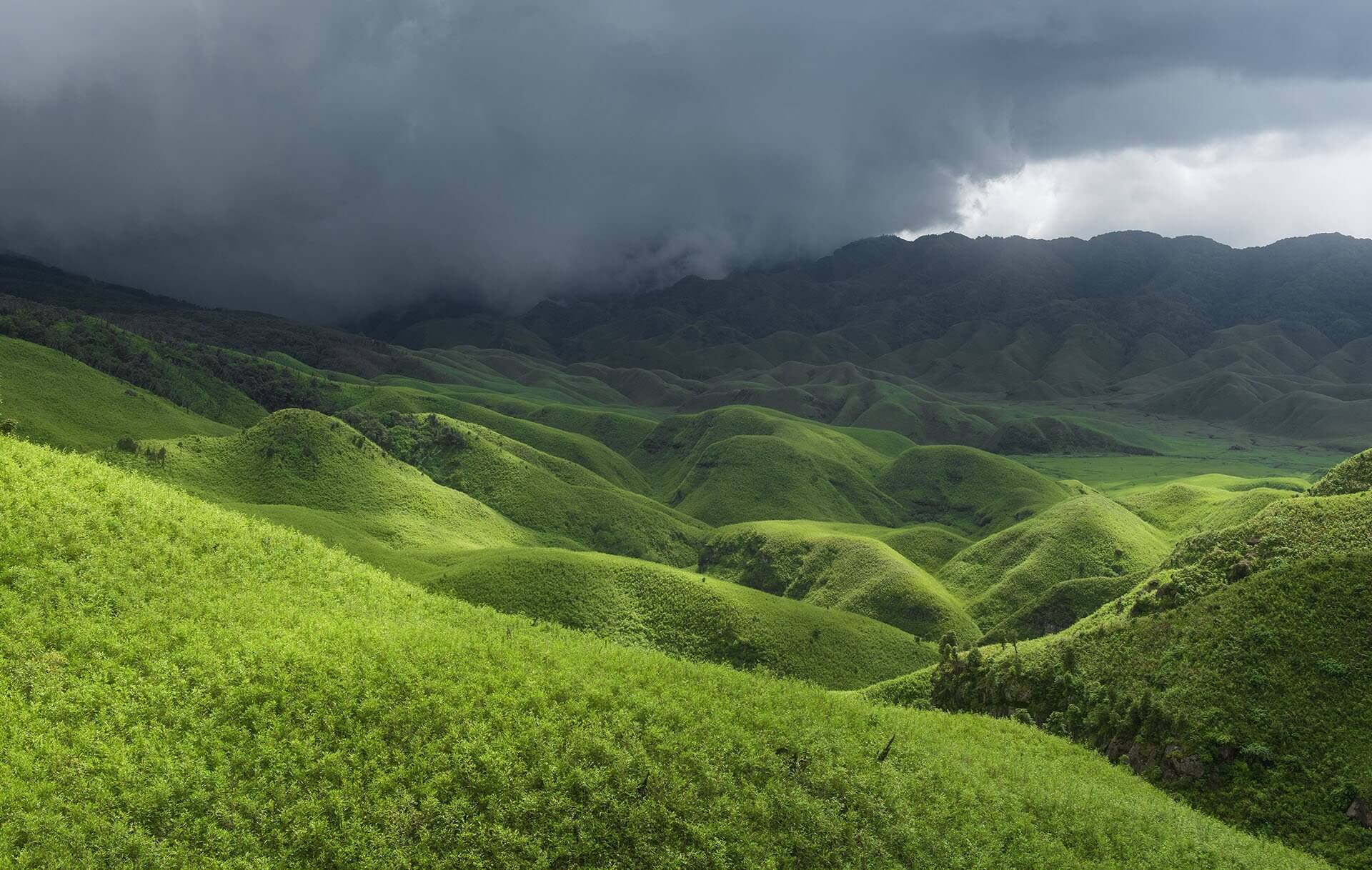
One of the hidden gems nestled in Nagaland hills, Dzukou Valley. The perfect location of nature lovers and adventure seekers. In July, especially when the wildflowers are in full bloom, the valley becomes known for its colorful mosaic.
At 2,452 meters in elevation, it provides a quiet escape from the cacophony of the city. Its an ideal place if one is looking for some solitude from all the honks and crowds.
The area is best known for its endemic flora and fauna. With the picturesque scenery and seasonal flowers, its a sight to see. It’s perfect for the peace-loving as well as the adventurous.
Indeed a heaven for the spiritual seekers and adventure junkies who love to stay in the outdoors! House of the state bird, Blyth’s tragopan, that makes it all the more important to nature. This fire, one of the biggest in 2006 affected nearly 20km of forest and a time-scale that many creatures need to develop.
Nature lovers and peace seekers should make way to Dzukou valley for adventure! The property is perfect for trekkers or nature lovers! Dzukou valley is a place, that no one ever visiting Nagaland can miss out.
What to Expect in Dzukou Valley
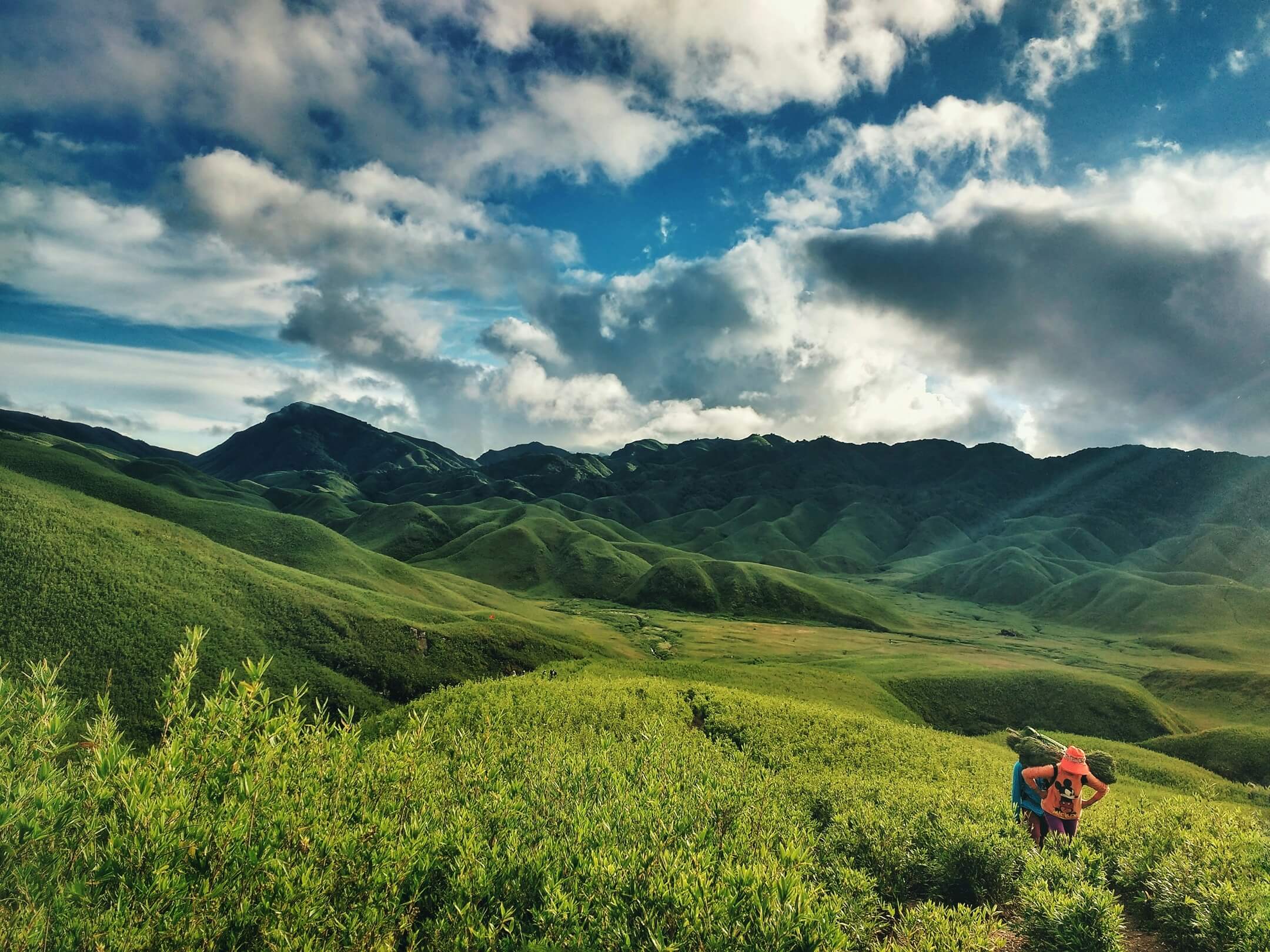
Dzukou Valley welcome visitors with large lush landscapes covered in rolling greens and meandering streams. Great for adventure activities and everyone from beginner to advanced trekkers. The valley is a nature lover and photographers paradise, with its plethora of colourful plants and animals.
It is quiet and peaceful in the valley, so it is an ideal place of inner-contemplation. Resting at 2,400 meters above sea level, a good escape from the city life. Treks commence between 7-9km from Zakhama or Viswema villages.
For the curious, there are plenty of well-marked trekking paths for different levels. The Viswema route is simpler but lengthier; on the other land, Zakhama route is shorter and bit harder with around 8,000 steps.
- June till the first week of July will be filled with dense greenery and various kinds of flowering plants.
- By the end of December, a dusting of snow covers the valley in a winter wonderland.
- The area is even more popular post-monsoon, with its kaleidoscope of natural colors.
Dzukou Valley has its best time during the early winters, hence in the first week of December it is. Neat days and chilly diamond, it’s hiking season at its best. Every season has its own vibe and good for trekking in any time of the year.
Location and Geography
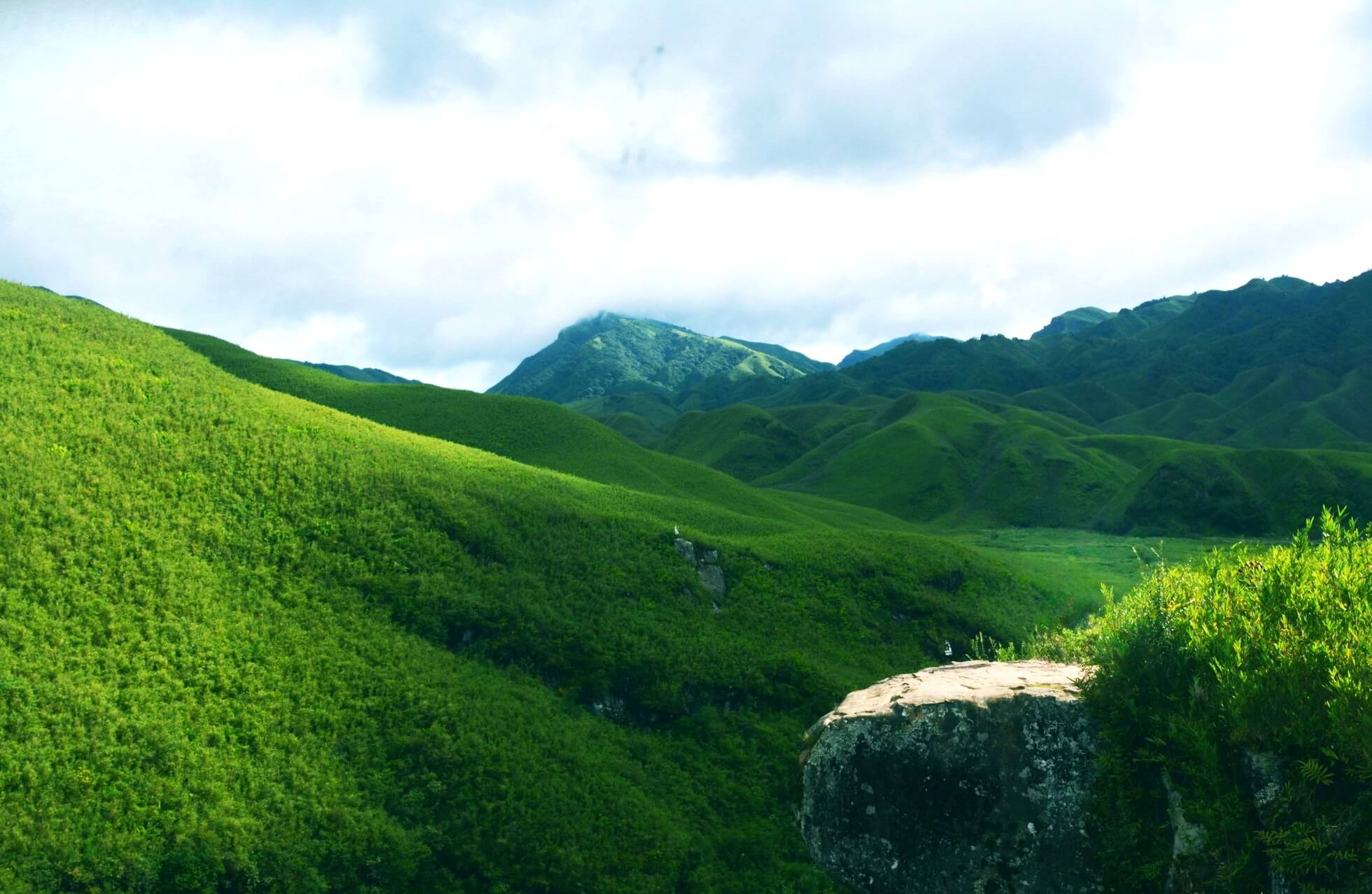
Dzukou Valley is at a beautiful location situated at the Nagaland-Manipur border, primarily on the side of Manipur. Dzukou Valley Coordinates– 25.560989 N, 94.141985 E Area-27 square Km of valley Altitude, 2452m above Sea level.
Dzukou Valley itself is surrounded by stunning landscapes, with its highest point being the majestic Mt. Iso at 2,994 meters. A hill formation which has taken thousands of years to be formed, offers the beauty of a breathless view surrounding this place for trekkers and nature-lovers. The high elevation of the valley, near 8,000 feet, presents green hillsides, and bright blooms everywhere. You can find the rare orchids and the legendary Dzukou Lily here.
From Kohima Village it is a 25 km drive to Viswema Village where the trek to Dzukou Valley begins. The hike lasts about 3–4 hours with different routes for all levels. The beginners way is easier, and the short cut route for the diehards (you know who you are).
| Feature | Details |
|---|---|
| Dzukou Valley location | Nagaland-Manipur border |
| Coordinates | 25.560989 N, 94.141985 E |
| Elevation | Approximately 2,452 meters above sea level |
| Nearby Peak | Mt. Iso (2,994 meters) |
| Area Covered | About 27 square kilometers |
| Accessibility | Via Viswema Village |
It is a brief introduction to the valley of the area that we have seen from above and it brings peace evidencing the wild beauty of this place. It is a must visit place if you are looking all the corners of Nagaland.
Best Time to Visit Dzukou Valley
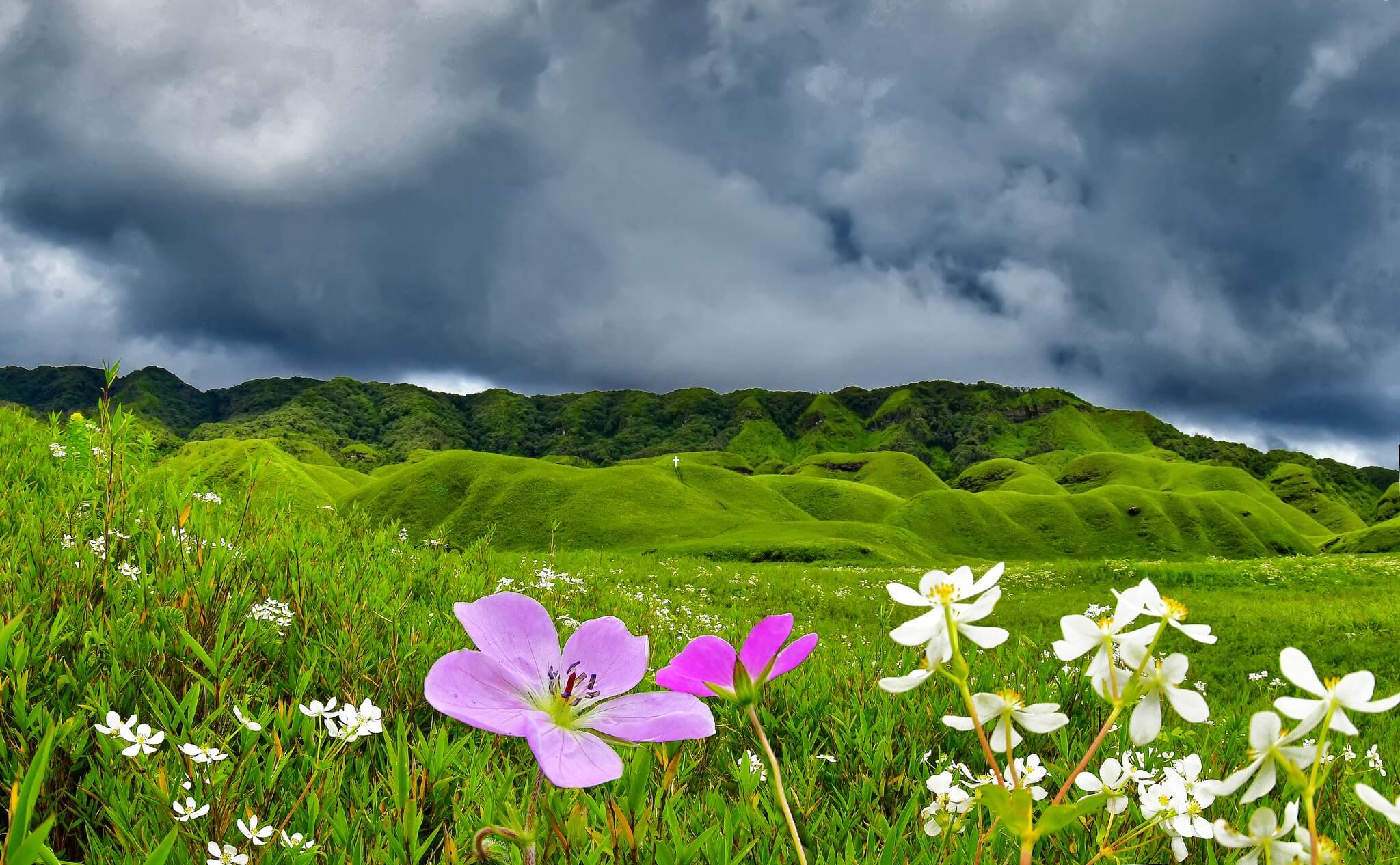
The ideal time to explore Dzukou Valley would be depending on the aspects which you want primarily to experience over there. Tap, Snap……. Doors open all year around and each has a season of its own to charm you, making sure your visit is Always Different; All Ways Special!!!! Between late June and early September the valley becomes a garden of colors, as wildflowers come to bloom. The season here peaks in July when the campgrounds fill up with even more nature lovers.
This is a good time to hike as the temperature will be mild.…Spring — March, April and May. These months are great for family hiking trips. Walk through the stunning landscape enjoying the impressive landscapes. In contrast, winter is dark and cold — perfect for people who want a bit of solitude.
In the monsoon season and with rain, there is no shortage of trials. The temperatures range from 10°C to 20°C and paths are now muddy. However, fearless trekkers may witness the valleys rich vegetation and wildlife.
Another good time to visit is from October to November (Autumn), which attains pleasing weather. It’s more quiet, closer to pure nature. The most appropriate time to head Dzukou Valley is all about your flavour and what each season here has to offer.
Trekking Routes to Dzukou Valley
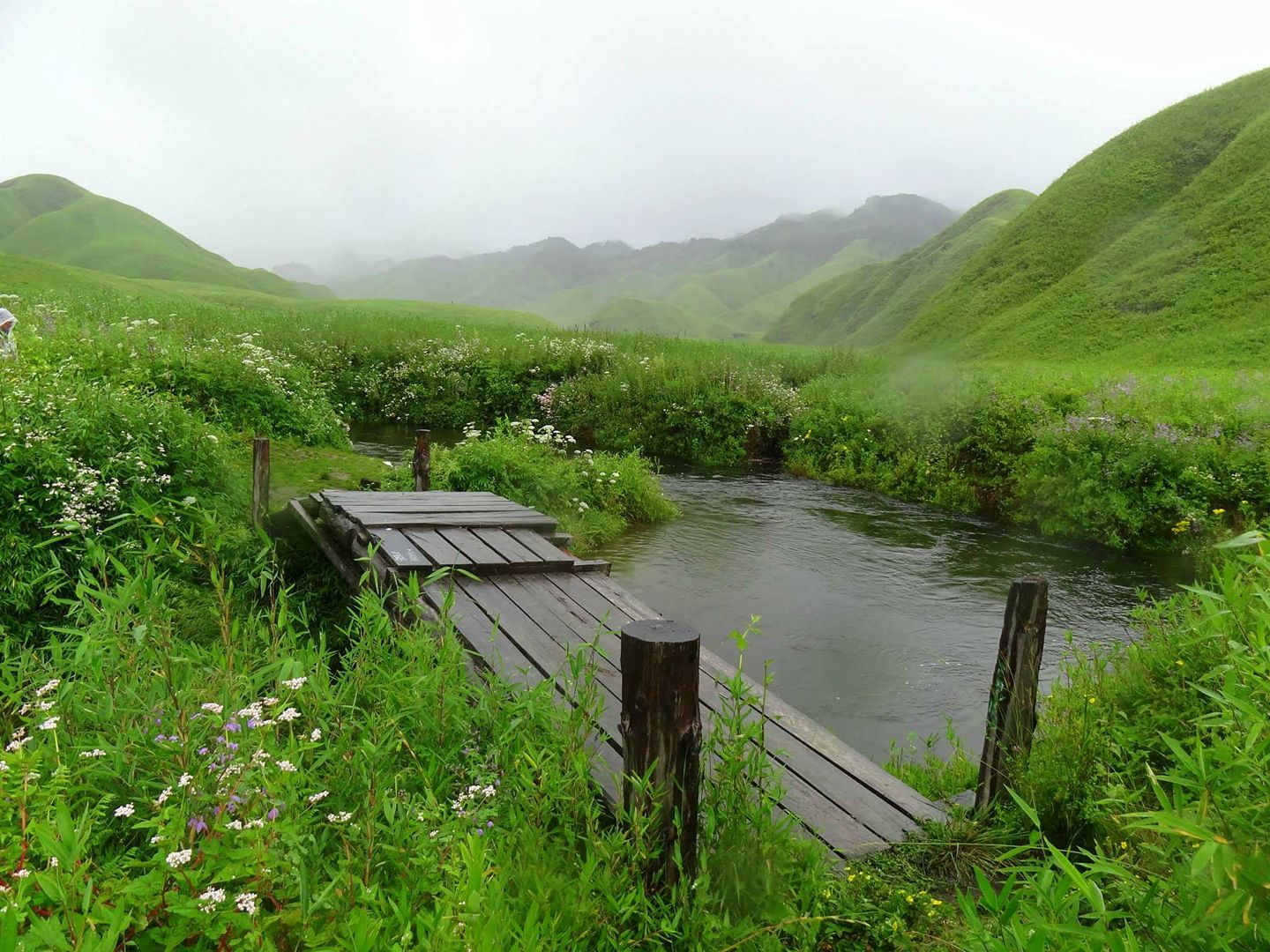
The trek to Dzukou valley has the capacity of compelling any nature loving wanderer into delving deeper into its enchanting beauty. Few suggests that the Viswema trail is one of the most beautiful. It is roughly 9 km long with a small part of it being motorable. Next, it becomes steep but being less difficult and beautiful views and a clear paths makes the trail crowded.
The Jakhama Friendlier trail experience is varied and an adventure with a difference. It is shorter, however there is much more walking and less travelled. These sections of the trail make you sweat, while the softer areas give you unique views of the valley. It just goes to show that you need to consider how far you are willing to go when choosing a path.
To be found at 8045ft these trekking roads begin with each sides of the hut. After that, a 25 kilometers walk to Viswema Village. Around the hut, you can see Japfu Peak, the 2nd highest peak in Nagaland falling at around 3,100 m.
| Trekking Route | Distance (km) | Altitude (ft) | Grade | Accessibility |
|---|---|---|---|---|
| Viswema Trail | 9 | 8,045 | Easy | Motorable for part |
| Jakhama Trail | Shorter than Viswema | N/A | Moderate | Less frequented |
Dzukou Valley provides lots of water sources for the trekkers to drink as much as they can. Dzukou Valley has various trekking routes for beginner to experienced trekkers. This makes it perfect for more innovative Nagaland tours.
Understanding the Dzukou Valley Ecosystem
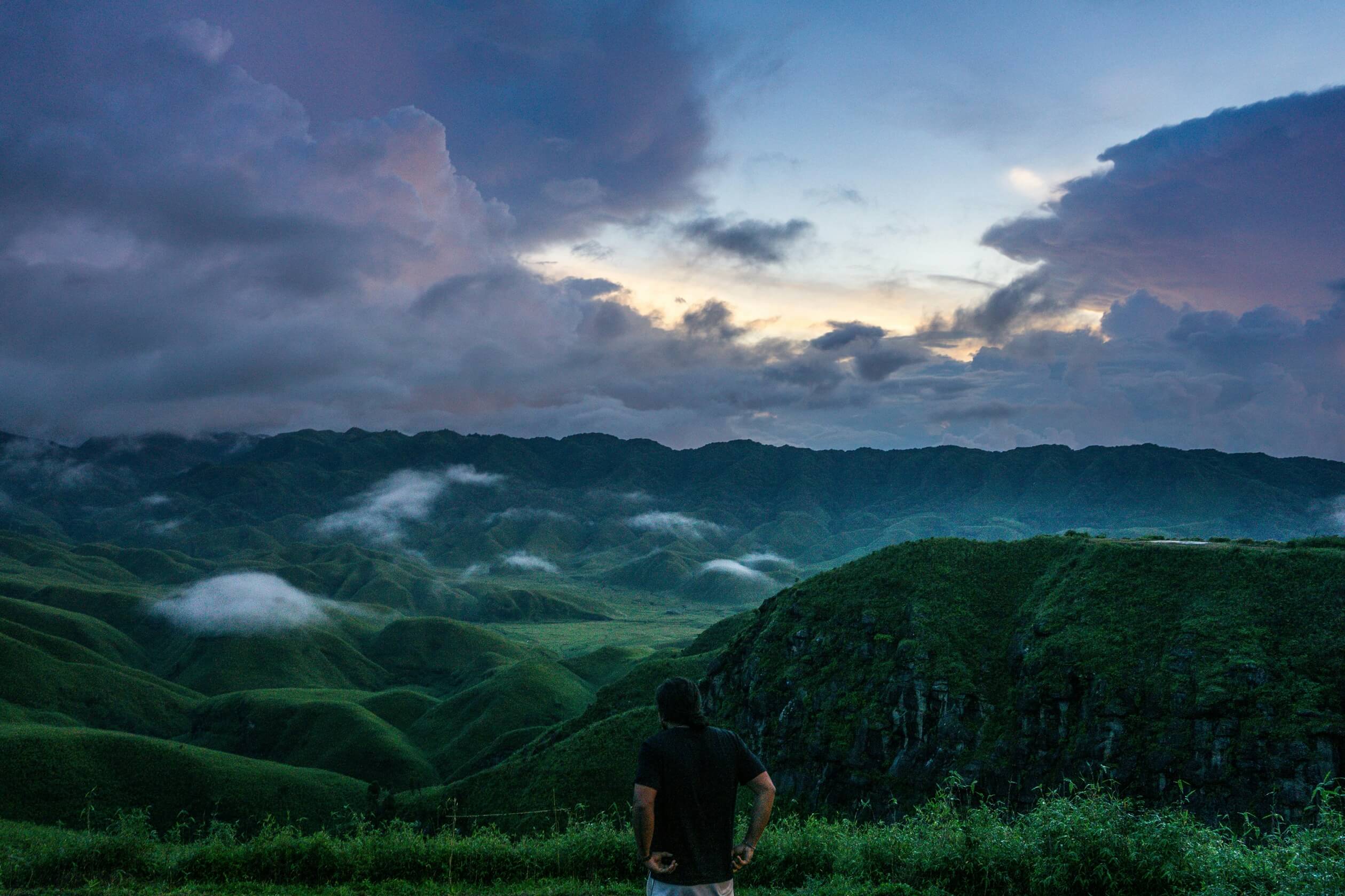
The ecosystem of Dzukou valley is one of its kind and the height at which it lies is at 2,438 meters. It lies behind the Japfu mountains which maintains an unique weather that helps in various types of plants to grow. It is a great bamboo and grass belt, which sustains the diversity in this area.
The Dzukou valley that hosts numerous plant and animal species is also located around this area. Numerous birds live here too including the Blyth’s Tragopan and Rufous Necked Hornbill but the most well known inhabitant is The Dzukou Lily. And here, these birds and flowers speak volumes about why the Dzukou Valley is as vital as it is popular among lovers of nature or those in quest for scientific inquiry.
That and wildfires — they are a thing here, arriving in 2006, 2010, 2012, 2015 and here. These tend to begin with land clearing farming practices. These fires are damaging the environment by releasing CO2, polluting the air we breathe and killing off vast amounts of plant and animal life.
Problems remain, but what is indisputable is the effort to save the valley. They encourage eco-friendly travel tourism. We want to preserve the valley for its plants and animals, but still let people revel in it’s beauty.
Accommodation Options in Dzukou Valley
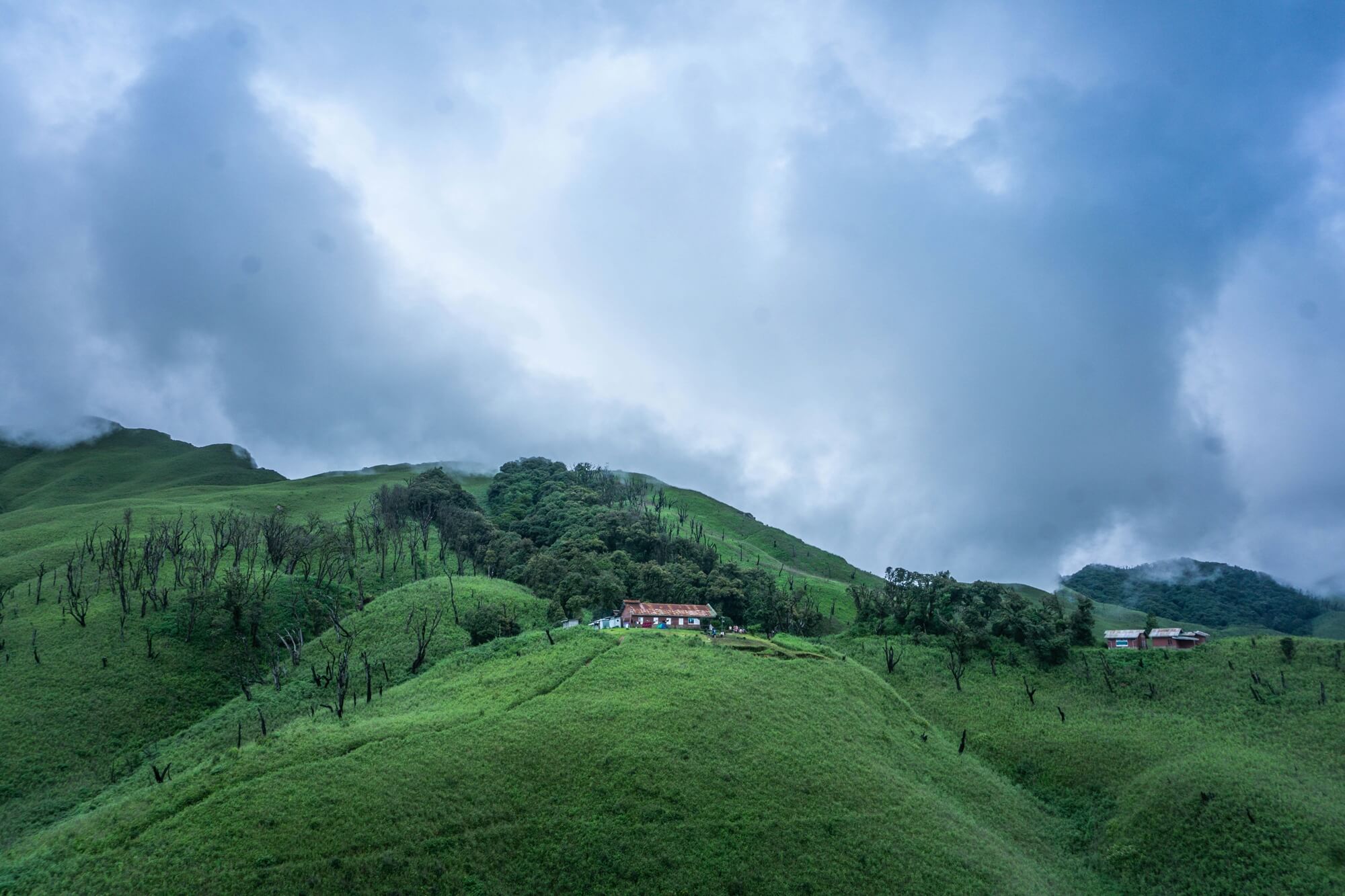
When you think of Dzukou Valley Trip, the first question is where to stay. They range from low-cost options to more adventurous camping. With something for everyone on offer, you’ll be sure to have a warm welcome back after your treks around the region.
Rest House Stay
The only accommodation is trekkers: you can always stay in the rest house. The Red Tree House — Also offers dorm beds and private rooms at reasonable rates between 100 INR to 1000 INR.
The provision of basic amenities for a comfortable stay You will appreciate the beautiful nature that surrounds you.
Camping Options
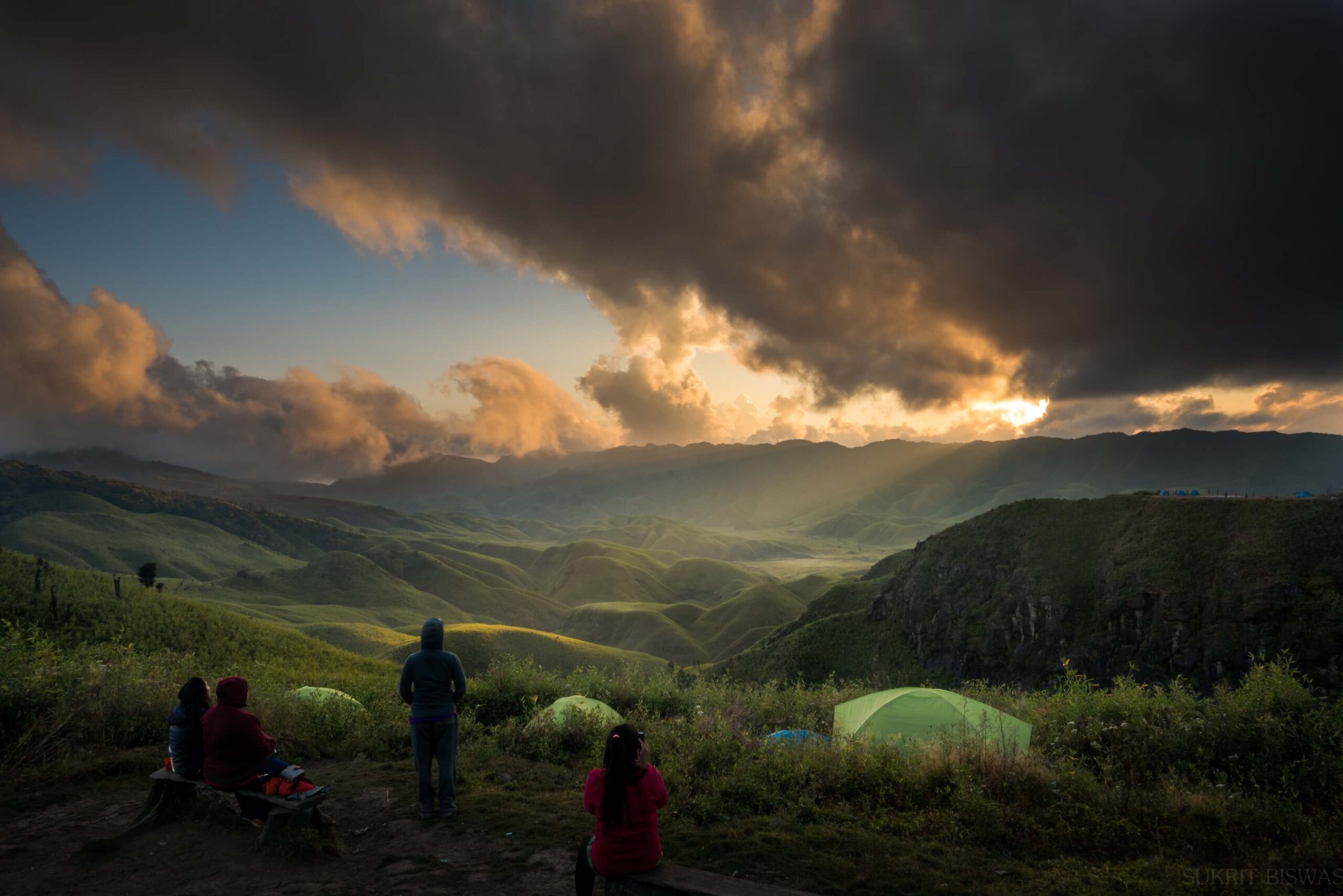
If you like to a have a little adventure of your own camping in Dzukou Valley is the thing for you. Pack your camping tent and gear for a true nature. Night Camping(Camping Beyond the Rest House) allows you to under the open starry night sky.
That, and getting a stack of wooden logs to cook my mother´s heating. To me it is a unique connection I have with nature.
| Accommodation Type | Price (INR) | Amenities |
|---|---|---|
| Dormitory Bed | 100 – 200 INR | Shared facilities |
| Private Room | 200 – 500 INR | Basic amenities |
| Camping | Variable (Tents to bring) | Bring your own gear, purchase firewood |
Food and Water Sources in Dzukou Valley
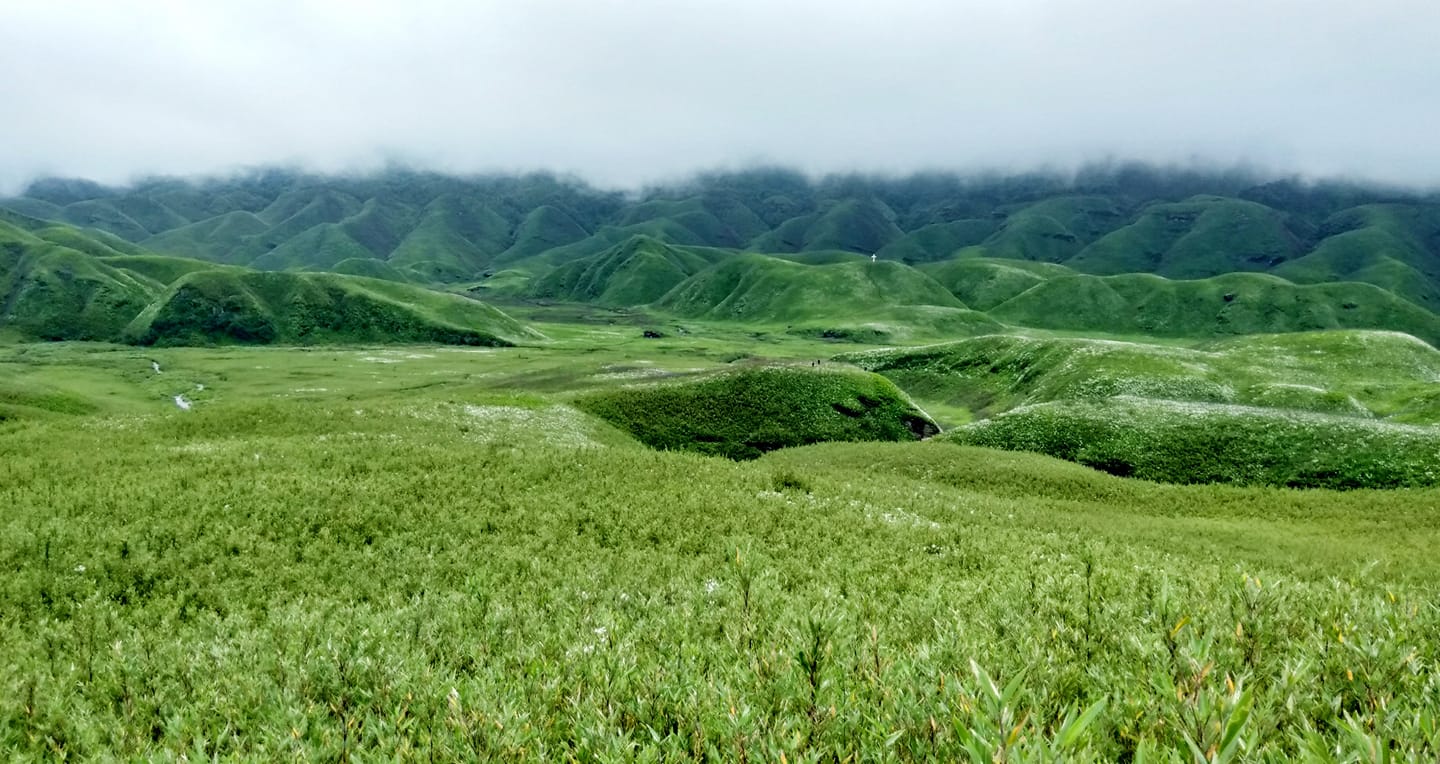
Special for trekkers, Dzukou Valley is but does have its challenges. Limited food and water. No real ability to store much food or water as the site is quite remote. Further, the food availability Dzukou Valley is mainly about some basic meals at the rest house. Such meals are prepared inspired by traditional food of Nagaland.
Trekkers must be well prepared before venturing out. Carrying dry snacks, light meals and sufficient water during the journey is a wise decision. Source: Dzukou Valley has water sources nearby streams that have clear cold winter waters. However, it is vital to boil the water before drinking to help ensure its safety.
There aren’t many places to sleep out there in the valley, so planning is essential. A lot of people stay at nearby towns like Kohima or Viswema and head to Dzukou Valley for the day. The other crowd goes camping for a more genuine love of the earth. We would have enough water to be able to cook and sit in the comedor, with a cool breeze coming through the windows, enjoying the view.
Travel Tips for Trekking in Dzukou Valley

Prepared for trek at Dzukou Valley will enhance your trip. Dzukou Valley Travel Tip for Trekkers Packing the right gear and proper safety rules Here are few most important packing instructions for the trekking and safety tips for your attractive, memorable and safe trek.
What to Pack for the Trek
You have got to carry a few trekking essentials with you when you set off for Dzukou Valley. When you go to Dzukou Valley, having some trekking essentials is a must. Things to carry for successful trek:
- Solid pair of trekking shoes on rocks and different surface
- Waterproof jackets and pants (lightweight is nice)
- First aid box for sudden injuries
- Small snacks or other non-perishable food items for energy
- Adequate water bottles with plans for refilling these easier.
- A portable charger so you never run out of juice — for both yourself and your gadgets.
- Flash light or headlamp (perfect for early morning hikes)
Essential Safety Tips
We must feel safe as we enjoy the view. To make a better trip and the issue-free journey to Dzukou Valley, follow these safe tips:
- For a safer trek and better insight, please get a local guide familiar with the terrain.
- Keep up with weather conditions to avoid dangerous situations
- Definitely, you do bring all your stuff back with you… plastic in particular to keep the valley unpolluted.
- Use communal restrooms can allow for more cleanliness.
- Always remain in good health and stop over the trek if required.
These tips will make you adventure ready and at the same time preserve the natural beauty of Dzukou Valley for other travellers. Prepare yourselves to take pleasure in this wonderful Valley.
Local Culture and Festivals
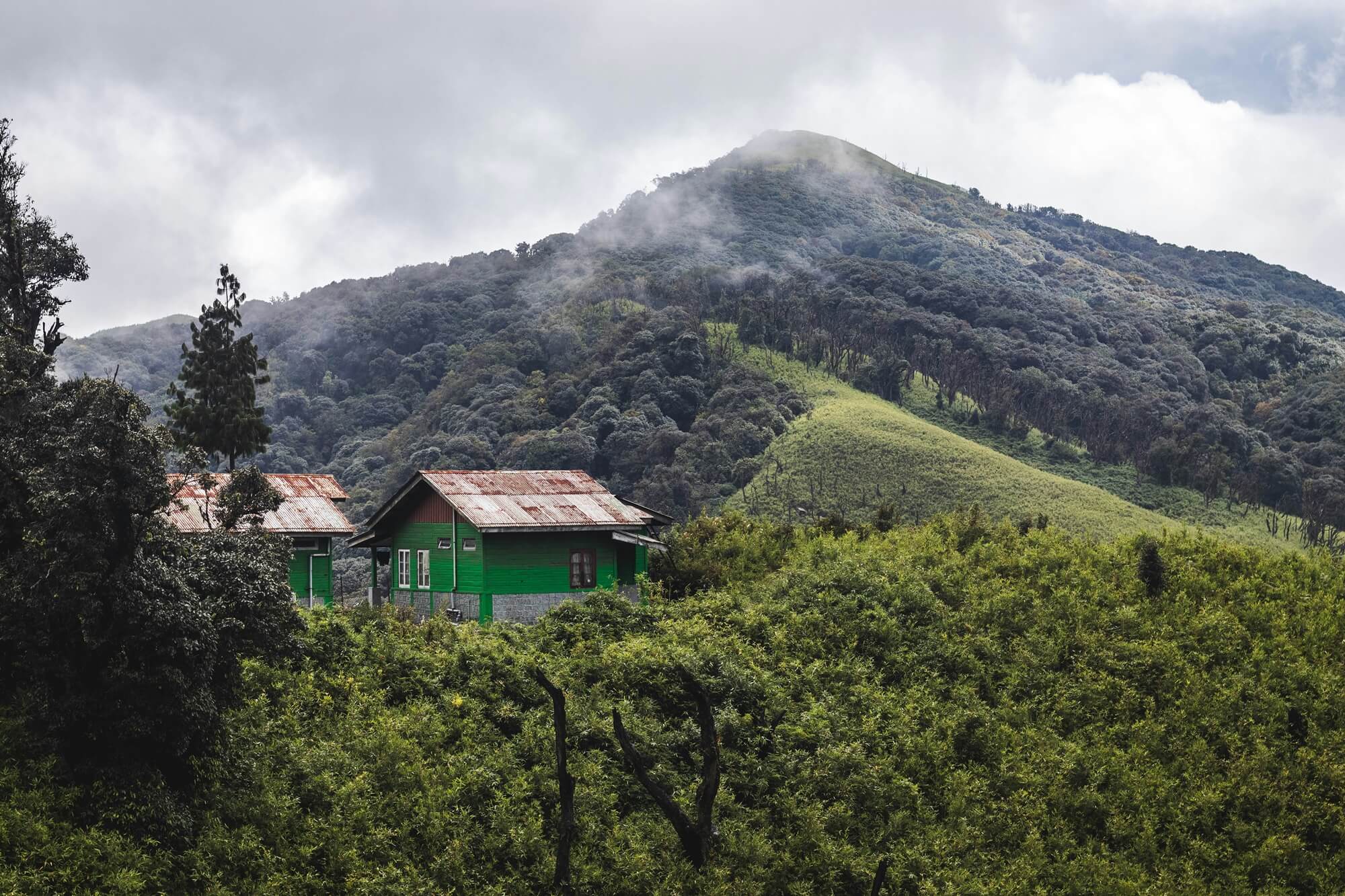
Dzukou Valley is something which is cultural and full of life. This music is rooted in the Naga tribes which are primarily the Angami tribe. The hiking adventure realm around, visitors will be exposed to Local traditions and culture Visitors get plunge into their trekking exploitation makes a permanent impression.
Nagaland: Plan your trip around major events such as the Hornbill Festival which is held from December 1 to December 10 every year. Duration: A ten-day festival which revolves round the wealthy cultural historical past of Naga tribes. There are various arts, crafts and traditional work done here.
There are 16 major tribes participating and each tribe displays their unique culture, music and dance. And that makes the festival an absolute must-see.
That’s how trekkers know more about the culture of Dzukou Valley which is one of the ancient and sacred places with deep historical and spiritual beliefs. Festival organizers are enabling visitors to experience local communities, traditions and the perpetuation of their cultural values through festivals.
Visitors start to widen their horizon by taking part in the festivals like Hornbill Festival. This gives purpose to their journey. During their trek to Dzukou valley at every turn, they find out new things about the rich Naga culture.
Wildlife in Dzukou Valley
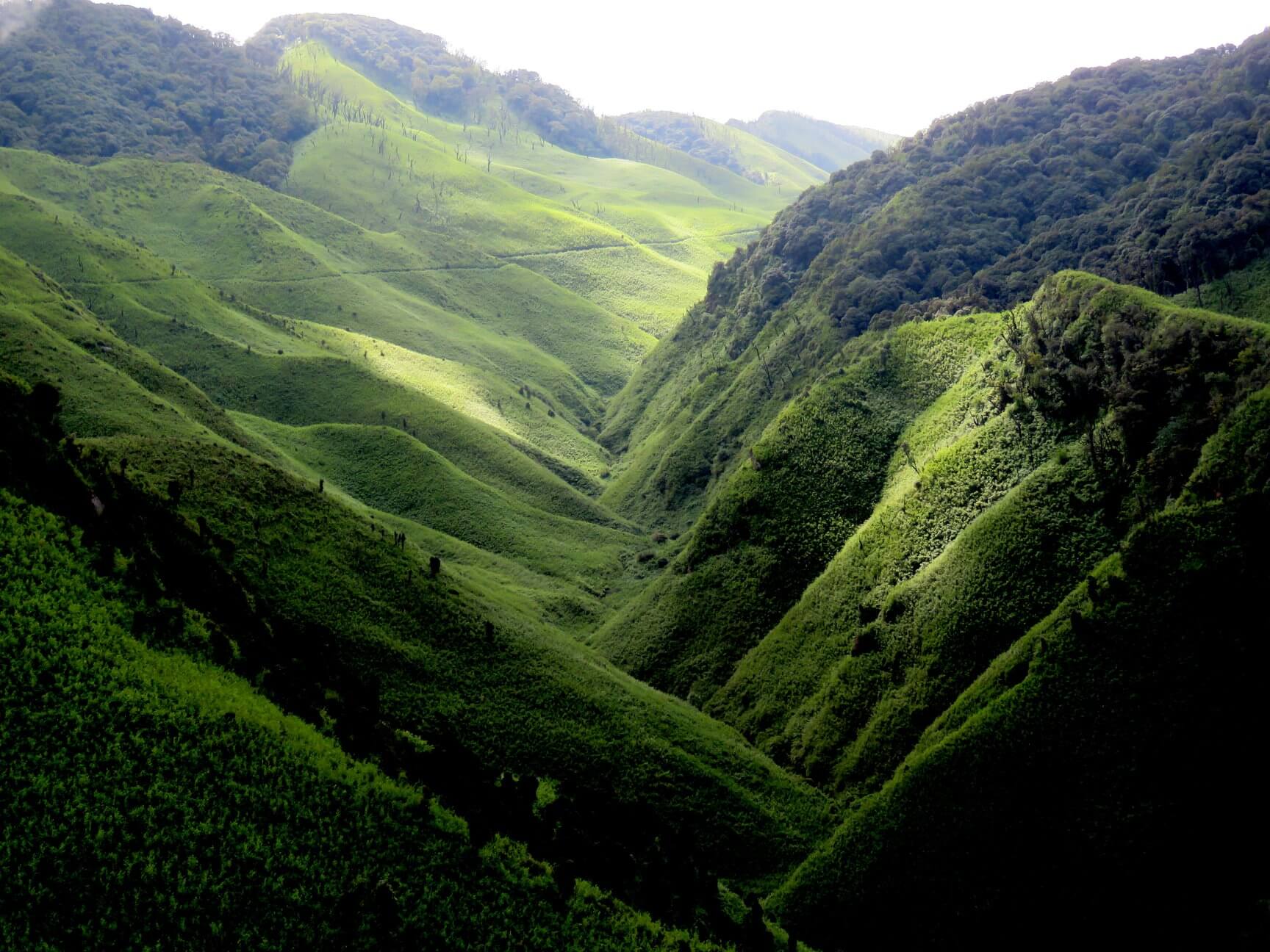
Dzukou Valley is all beauty soul and solace. Dzukou Valley – Abode to versatile wildlife This pristine area is a bird lover and nature enthusiast paradise.
Birds of Dzukou Valley are very colorful and unique species You will also be able to observe magnificent birds that are endemic to Borneo. Its always interesting and informative to watch them in wild. The great wildlife in the valley, it helps us to want to save the valley.
List of Bird species that can be seen in Dzukou Valley:
- Hornbills
- Blue Whistling Thrush
- Rufous Sibia
- Black Drongo
The eco-tourism of the valley is ecologically sustainable. Visitors here are taught how to watch wildlife unobtrusively. So, this process is necessary to maintain the careful harmony of the valley.
This makes it more meaningful to visit by learning about the different life forms; wildlife in Dzukou Valley. And animal on animal action certainly spices up the experience. For the future, we always hope that as visitors we will be able to enjoy these places safe.
The Best Activities in Dzukou Valley

For people who love nature and seeking adventure, Dzukou Valley, it is a dream spot. It’s not just about trekking. This place is established with deer farm, and offers a lot to see for any visitor. And also, here the beautiful scenic beauty of Dzukou Valley is very good for sightseeing. Very best place to visit in Manipur-The so fancy editor
Dzukou Valley is known for trekking and the most popular thing to do in Dzukou valley. The Dzukou Peak, the highest point in the valley offers a stunning view. Japfu peak trek: This is a pick at the top of every adventure lover.
Besides, the Japfu Peak and out in the valley camping sauce for visitors as well. It is better camping after the rainy season when it is drier. Camping under the stars is one way to take in the tranquility of this valley. The Track is tranquil and peaceful, with nothing but the sounds of nature to help you unwind and meditate.
There are numerous scenic locations for photographers in Dzukou Valley From capturing the breathtaking Dzukou lilies and Himalayan flowers to larger than life landscapes. There are caves to be explored too along with a little bit of adventure. Dzukou Valley with this combination of stunning views and amazing outdoor activities will leave you with memories to cherish.
Conservation Efforts in Dzukou Valley
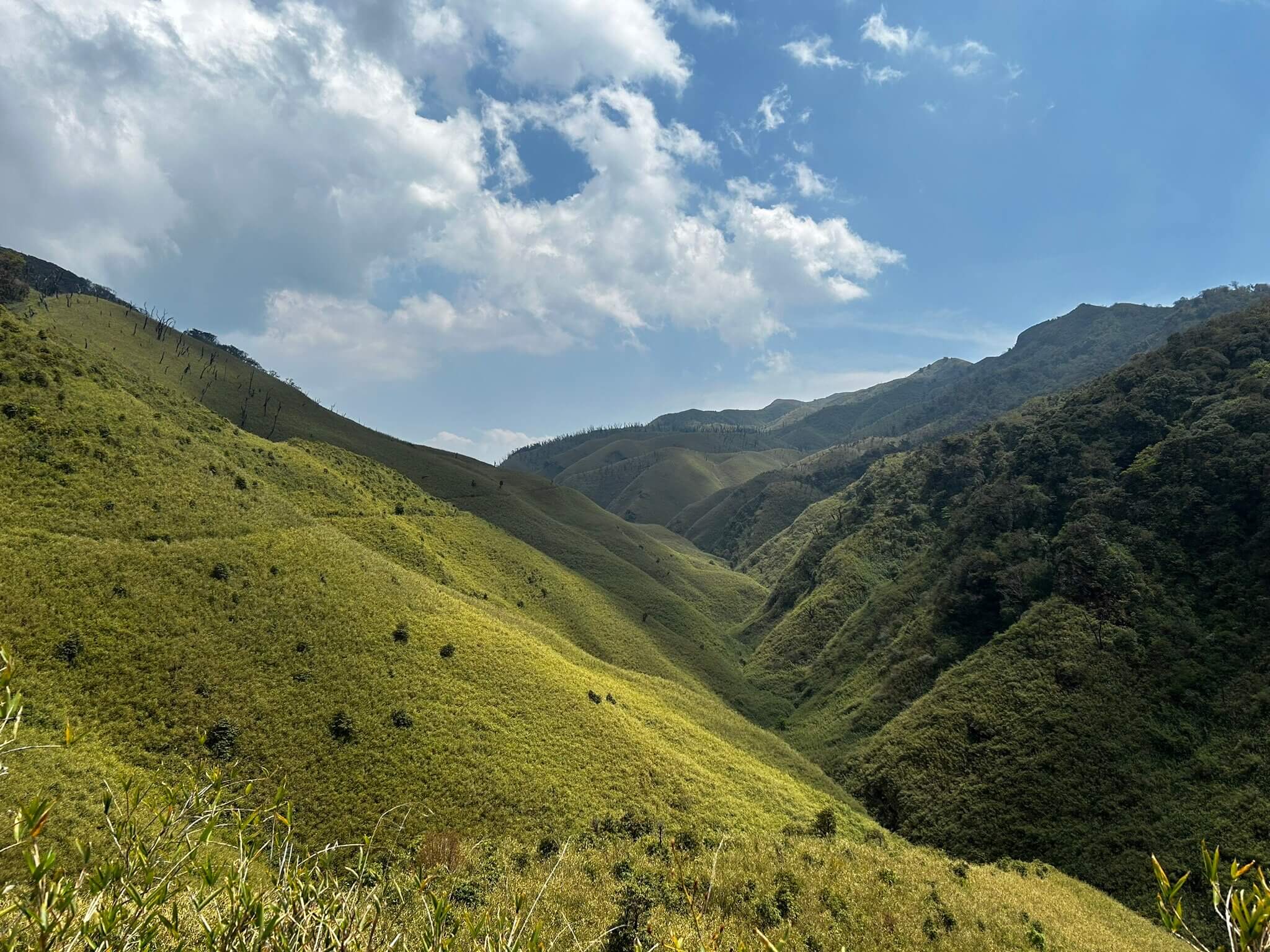
Massive forest fire incites stronger campaign to save Dzukou Valley Add to that the fact that this same fire burned about 20,000 acres, and you can see how small a delicate the valley truly is. The Southern Angami Youth Association has proved that the local people can play a vital role in protecting mother nature by extinguishing the forest fire.
The valley also has many rare plants and other animals that are endangered. In order to protect these places, we need sustainable tourism! That is to say maintained in such a way that it matches the environment, this also meant the ways visitors will travel … or better put — this means the people will not allow visitors to enter harming the Earth. Policies like the plastic-free rule lessen pollution and educate visitors on how to travel responsibly.
By planting trees waste management and other role are responsible to save the valley. Together, they said local leaders and environmental groups had to raise awareness and take steps. They would like to look after the plants and animals of the valley, and help all of us understand what is out there. Its sacredness being felt by the Angami tribes, it has been reason enough to rally efforts around saving this valley.
| Conservation Efforts | Description |
|---|---|
| Sustainable Tourism Practices | Implementing regulations to promote eco-sensitive travel and reduce pollution. |
| Waste Management Systems | Establishing proper waste disposal methods to keep the environment clean. |
| Reforestation Projects | Planting native species to restore the forest land and combat biodiversity loss. |
| Community Involvement | Engaging local groups in conservation measures, enhancing their connection to the land. |
| Education and Awareness | Conducting programs to inform tourists and locals about the valley’s ecological importance. |
How to Reach Dzukou Valley

From Kohima, which is the capital of Nagaland, Dzukou Valley is only a short journey. All the mode of transportation for travelers are open for Dzukou Valley. Share taxis will cost around 40 INR to 50 INR.
From Viswema, there will be ways that lead down into the valley. How to Reach Dzukou Valley. There is a straight route that can go from Dzukou Valley through the delightful spot. In early July, the Dzukou lily blooms and you will find it on your route. Watch out for rough patches.
The Inner Line Permit required to travel into the Naga Hills applies. Some offices can provide this for you. Dzukou Valley, if planned well and once guided in the right direction makes for quite an exhilarating journey.
Conclusion
Dzukou Valley is possibly one of the most beautiful locations in North east India, and a great place for those who are looking for an outdoor adventure. Sitting at approximately 2,438 meters high, this is a simultaneous rugged and cool trek. It is a trek that allows you to be one with nature and offers stunning vistas as far as the eye can see.
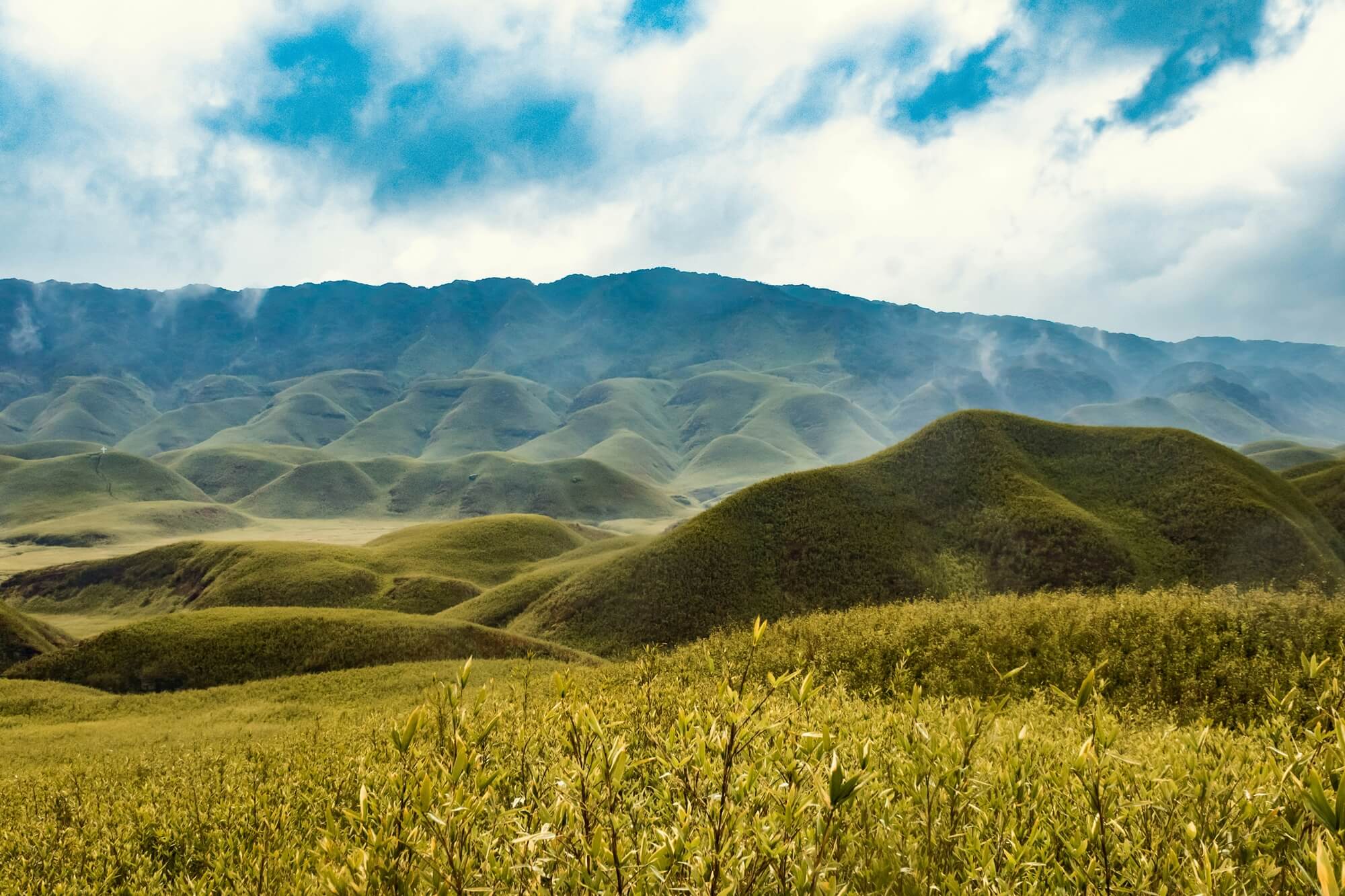
When you come in June to September, it is full once as everything will be green and colorful. Or winter for something a bit different? In any case, you will carry the sights and serenity with you when you depart.
Key to a great trek is getting prepared. Ride: It can be anywhere from 4 to 7 hours drive from Zakhama Village. Unless you are a local, you will need to get an Inner Line Permit. This is how important it should be to save the beauty of Dzukou.
Part of the adventure is knowing where to stay and eat in places The dorms are cheap, and the food is delicious. Which makes your stay more exciting.
It is a marvel of nature lovers, the Dzukou Valley. Dzukou lily is a once-in-a-lifetime sight. We want to keep it this way so we can allow others the luxury of enjoying it too. So, all you backpackers get your bags ready and go on to the path of Dzukou Valley!
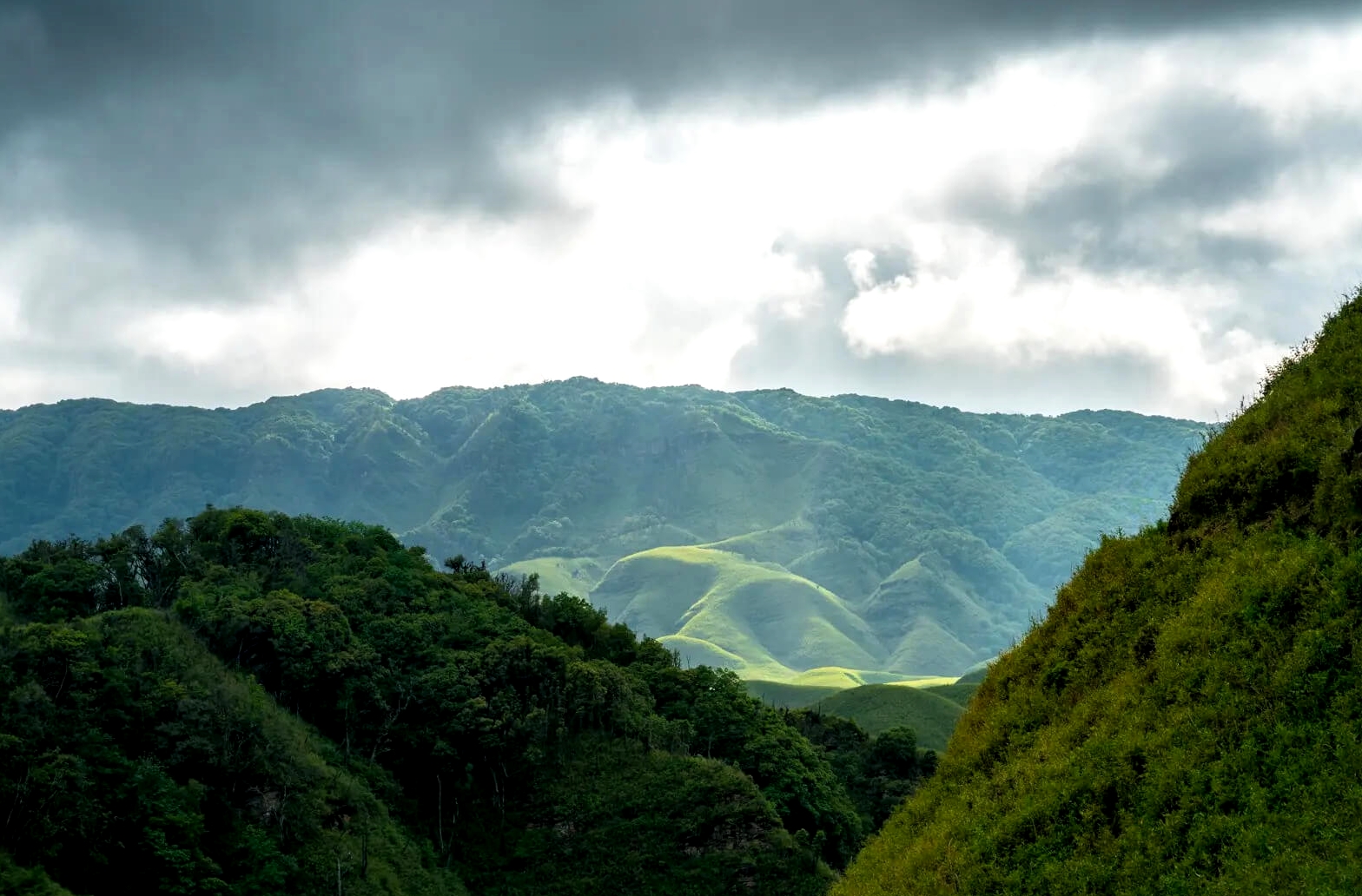
FAQ
When to visit Dzukou Valley?
For trek to dzukou valley the best time you can pick is from late June to early September. July is the time to view these spectacular wildflowers.
How to reach Dzukou Valley?
Dzukou Valley – Near Kohima, Nagaland, you can take shared cabs or local transport to reach Viswema village. The main trekking starting point.
Which is the best time to see Dzukou Valley flowers?
The best time to visit is during the monsoon season from June to September when the Dzukou lilies bloom beautifully.
What are the Staying options at Dzukou Valley?
There is a rest house where you can spend the night dormitory-style or in private quarters. Alternatively, take a nap under the stars.
Is Trekking in Dzukou Valley Safe?
Trekking in Dzukou Valley is safe. Just ensure that you take the right steps and hire a guide and do not forget to check the weather, good luck with your trek.
What animals can you see in Dzukou Valley?
The ideal destination for bird watching and spotting small mammals, Dzukou Valley Wildlife and birds watching paradise.
What food and water resources are there in Dzukou Valley?
There are meals that you can get at the rest house, simple food as well as traditional Naga food. Water comes from the nearby streams. Be sure to make it very hot before drinking.
What to carry for my Dzukou Valley Trek?
Do carry important stuff such as good trekking shoes, raincoats, first-aid, and eatables with ample water bottles along with power banks and torches. It helps in making your journey convenient.
Any local cultural activities or festivals around Dzukou Valley?
Local festivals like the Hornbill Festival. You can visit there, It showcases the rich culture of the Naga tribes. That just adds to the adventure of it all.
What are the conservation practices in Dzukou Valley?
A plastic-free policy protects the ecosystem to a larger scale. This is what conservation efforts are all about. Trekkers are obliged to use tourist mannerisms to maintain security in the valley as well.
Is Dzukou Valley trek challenging for beginners?
The hike is considered moderate, it begins with a steep prior climb that beginners can still do but they need to be properly trained.
Any permits required for visiting Dzukou Valley?
Domestic travelers don’t need permits, but foreigners require an Inner Line Permit (ILP) – can get it online or in Nagaland.
Will mobile network or Wi-Fi service be available to you in Dzukou Valley?
There is very little mobile coverage in dzukou valley, always inform someone of your Plans.
Is Dzukou Valley Trek kid-friendly or family friendly?
Older children (12+) are better suited to the journey. Families should be well prepared.
